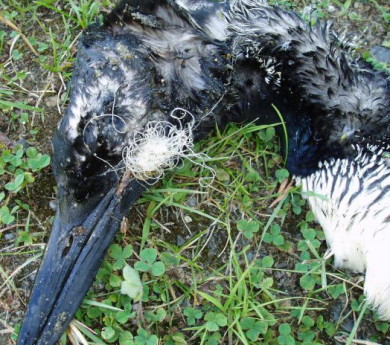This story is not for the feint at heart, but I found Dr. Pokras’s quick note to me about this loon fascinating. I mailed this highly emaciated (and smelly) loon fresh to him on Aug. 9 after paddling 3 hours to find it on Green River Reservoir on Aug. 8th. He prefers “fresh” birds because it is easier to figure out what happened to it compared to “frozen” birds where the frozen tissues make it harder to decipher the story.
We’ve collected 4 dead adult loons in Vermont this summer, and it is likely that 3 have died from lead fishing gear indicating that Vermont’s lead fishing gear law does not work as well as it should. Only lead sinkers ½ ounce or less are banned. At least one of these birds had a lead jig in it, which are still legal. In the next few days, I will be trying to catch 2 more loons caught up in fishing gear on Caspian Lake and South Pond in Eden. We’ve already tried to catch the Caspian loon once unsuccessfully, and this will likely be our last try. Eric Hanson, VLCP Coordinator
Here’s the letter:
“Hi Eric — Just necropsied the unfrozen bird from Green River Res. found on Aug 8th. It was a totally emaciated AD male. Had a few rocks and crayfish fragments in the gizzard, moderate # of tapeworms (but not much out of the ordinary). Some evidence of a recent small puncture to the left abdominal area that resulted in some bleeding and internal adhesions, but didn’t look to me as though this wound could have been fatal. Looked like a typical loon stab wound sort of thing. As the skin over the wound had totally healed, certainly the bird lived at least some weeks after the possible fight.
Unexpected finding was that the body fluids tested at necropsy had significantly elevated Pb (lead) levels. I tested 2 different samples on 2 Pb machines and both came up quite high, even though no metal was visible on the xray or at necropsy. Will hope to do some liver toxicology this fall to get more precise info — but I strongly suspect that the bird’s primary problem was Pb, and then as it got weakened, it lost a fight…just a surmise of course.
(The source of the lead was likely a very small object that dissolved completely or passed through after the poisoning occurred.)
Hope that this is helpful.
Cheers,
Dr. Mark Pokras
Wildlife Clinic – Cummings School of Veterinary Medicine
Tufts University”

